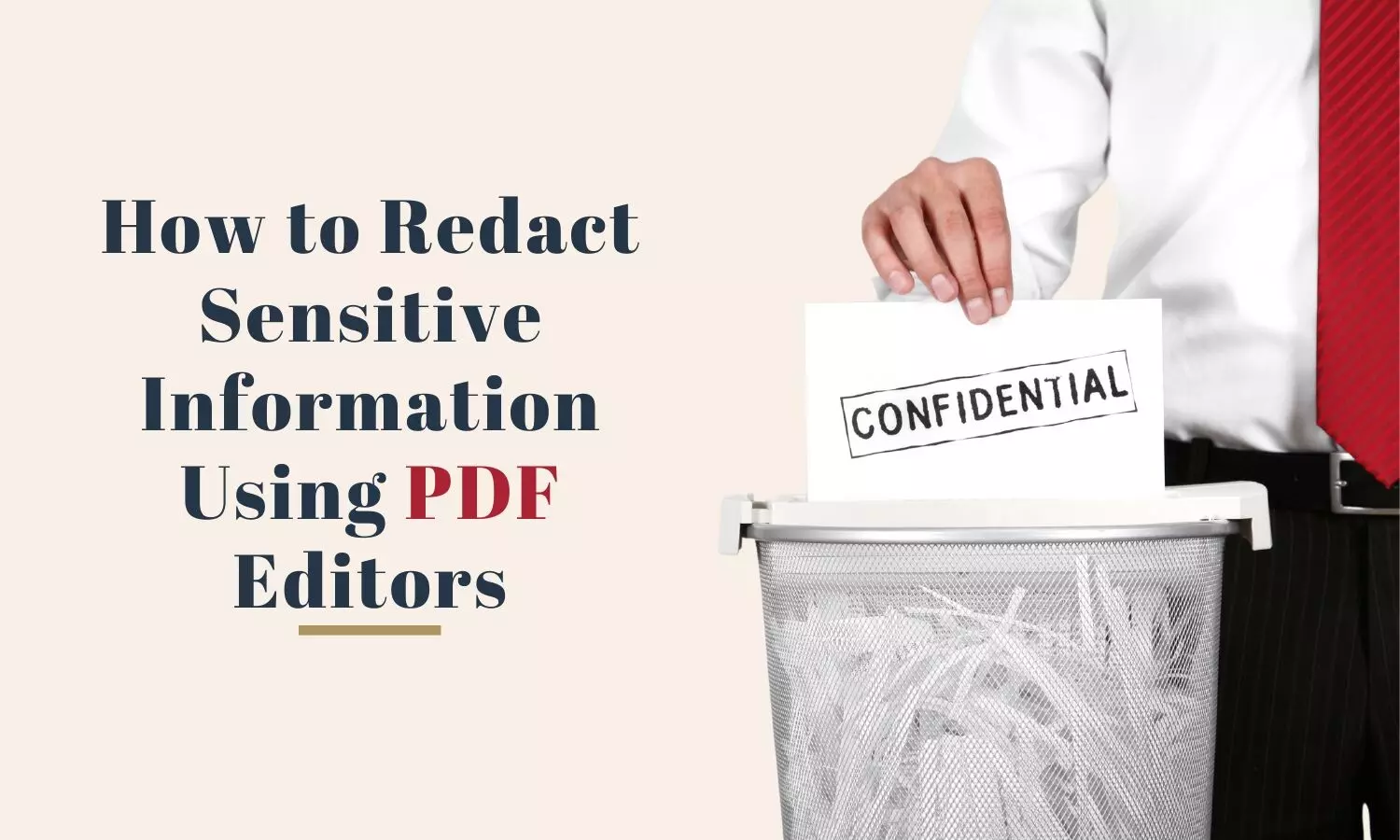How to Redact Sensitive Information Using PDF Editors
The article talks about how you can redact the confidential information in a PDF. Scroll down to read more!

PDF is one of the most commonly used types of documents especially when it comes to sharing because of its capability to retain the size and structure of the document. However, this very characteristic becomes problematic when it comes to regimes for removing sensitive material. If you have ever worked with a standard word-processing document, you know that using the backspace or delete key is insufficient to remove text from a PDF. It is stated that residual traces may be embedded into the file and thus, reveal sensitive information.
Why Is It Important To Redact Sensitive Information?
It is necessary to note that data protection is a priority in the present time where everyone seems to be connected to the internet. People including business entities, other recognized legal entities, and individual persons deal with documents with sensitive content including social security numbers, credit card details, and trade secrets. Redaction assumes a significant role when it comes to sharing such documents to ensure the privacy of the said information.
Here's a breakdown of why redacting sensitive information is essential:
- Compliance with Regulations: Various sectors such as healthcare (HIPAA) and financial (PCI DSS) have legal requirements for the protection of information. This action eliminates such details to conform to these regulations as well as prevent legal consequences.
- Mitigating Security Risks: Failure to remain anonymous while consuming information can lead to identity theft, financial fraud, and the negative portrayal of one’s reputation. Here, redaction eliminates such risks since the data is deleted from the document permanently.
- Facilitating Collaboration: It enables one to share information where some of it is sensitive which when shared would defeat its purpose by using redaction.
Common Mistakes While We Redact Sensitive Information
While redacting information might seem straightforward, there are pitfalls to be aware of:
- Blackout vs. Redaction: While editing, even if the text is covered with a marker tool, it is not fully erased and can be brought back at the user’s convenience. Some of the newer forms of PDF readers can easily undo the blackout to reveal the hidden text.
- Font Color Change: Erasing the font colour to white or any colour close to the background colour appears as a solution that can be reversed easily using the tools available in most PDF readers.
- Metadata Oversights: In some cases, certain details like the author’s name, creation date, or other metadata may be encoded in the PDF file. Simple censoring or removal of content in the document will not solve this problem.
- Overlooking Scanned Documents: If your PDF is extracted from an image, the text in the document could be non editable. An OCR PDF software is required to convert the scanned documents into a manageable format that is both searchable and redactable.
Effective Techniques While We Redact Sensitive Information with PDF Editors
Current applications of PDF editors also come with powerful redaction features to guarantee the complete enhancement of the redacted text. Here are the key techniques to employ:
- Permanent Removal: The optimal redaction method allows for the complete erasure of the possibly sensitive text within the PDF file without any chance of its retrieval. Search for options such as sanitising documents or permanent redaction among the available features of the editors.
- Redact by Selection: Almost all PDF editing tools have features that enable users to choose which parts of the texts/images should be blacked out. This allows specific and detailed control over information that has to be deleted.
- Search and Redact: The pro editors come with the option to search for a specific word or string and delete all instances of the word at once. It saves time when one is dealing with large PDFs that consist of recurrent sensitive information.
- Redaction Reasons: Some editors have fields where you can give a reason why the specific content was redacted, for instance, ‘confidential,’ ‘proprietary,’ etc.
- Bates Numbering: It is acceptable to give unique identification numbers to the content which is blacked out or left blank and trace the individual redaction within the document.
Choosing The Right PDF Editor For Redaction Needs
Currently, some of the PDF editor online freely available programs have redaction options that might be simple or complex distinctive features. Here's a brief overview of what to consider when choosing an editor for your redaction needs:
- Free vs. Paid Editors: There are more limitations concerning redaction in the case of free PDF editors. Some of the paid editors have better functionalities, such as permanent redaction, search & redact, and providing reasons for redaction.
- Ease of Use: The application should provide a clear interface and simple redaction tools to users to avoid time loss.
- Batch Processing: In case you process the original documents often, you should look for editors capable of processing all of them at the same time.
- Security Features: Make sure the selected editor considers the confidentiality of data by providing such options as a password or encryption for documents with excluded information.
Thus, the process of redaction of the documents, particularly PDF files, plays a crucial role in ensuring the confidentiality of the contents. This means that understanding the principles of redaction, avoiding common errors, and using efficient techniques with the help of PDF editors like Adobe Acrobat will protect the confidentiality of the necessary information.
Important Links
Law Library: Notes and Study Material for LLB, LLM, Judiciary, and Entrance Exams


